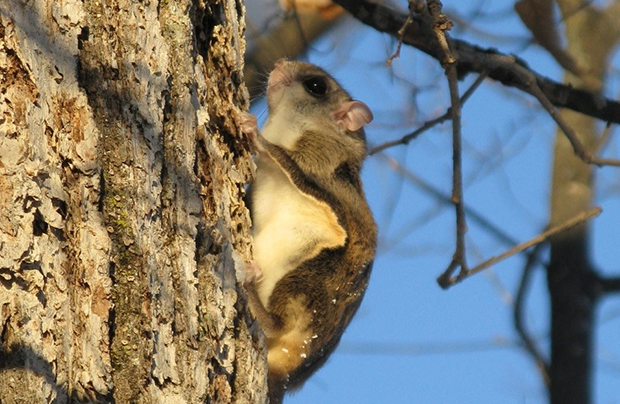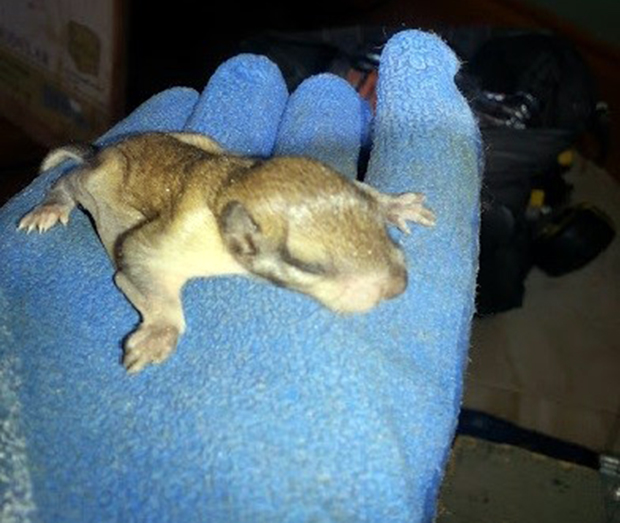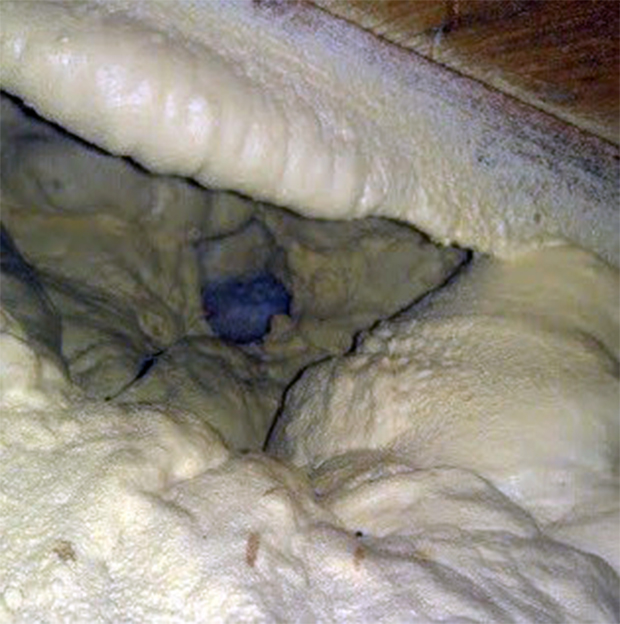
Lately, Skedaddle Humane Wildlife Control Sudbury has been receiving quite a few calls from Sudbury home and business owners who are dealing with flying squirrels in their homes.
Below, Skedaddle Humane Wildlife Control Sudbury takes a closer look at flying squirrels and what to do if you find them in your home or business.
Appearance
Flying squirrels have thick light brown fur on their upper body, grey on the flanks and white hair underneath. They have large eyes and a flat tail. They can also be identified by their long whiskers, common to nocturnal mammals. The adult northern flying squirrel measures from 25 to 37 cm long and their weight can range from 110 to 230 grams.
Behaviour
Contrary to what its name suggests, the flying squirrel cannot fly. Instead, it glides with two furry membranes, called patagia, loosely stretched between its wrists and ankles. The membranes act as a parachute to support the squirrel while jumping from tree to tree. The flying squirrel normally glides diagonally downward from one branch, scampers to the top of the tree and jumps on a downward angle to the next one. The flying squirrel also has a flat, furry tail that it uses as a rudder while gliding. The squirrel uses both its tail and membrane to steer left and right, and even to make 180-degree turns.
Flying squirrels are communal animals that often nest together in groups of 4-10, to help maintain their body temperatures. Flying squirrels do not go into hibernation, or even torpor, unlike other squirrel species, such as the Eastern Gray Squirrels. Unless they have babies, flying squirrels move nests quite a bit.

“A baby flying squirrel that has been removed from an attic. Wildlife babies are reunited with their mother on the outside of the attic so that she can relocate them to one of her alternate den sites in the area.”
Flying squirrels, like other species of squirrels, make nests called dreys. They will build these nests in hollow old trees. They have also been known to build nests underground.
Sudbury residents who own a home or businesses next to wooded lots or forests are often most susceptible to flying squirrel infestations.
Flying squirrels are omnivores. They search the forest ground for bugs, nuts, seeds, berries, etc. Flying squirrels are most active between dusk and dawn.
The dangers flying squirrels present to your home or business:
Flying squirrels can cause quite a bit of damage to your home if they manage to get in through a vulnerable area. Common entry points for flying squirrels include:
- Uncapped chimneys
- Gaps in soffits
- Gaps in sidings
- Unscreened vents
Once squirrels gain access into your home or attic, they will mark their territory the same way they do outside, through chewing and urination. They will chew on wood beams, wires, pipes, etc. Chewed electrical wires are especially of concern, as they may present a fire hazard. Squirrels in the attic will also destroy the insulation with their feces and urine.
Squirrels nest in groups, so if you spot one flying squirrel, you can be sure there are others. Homeowners may have trouble seeing the squirrels, because flying squirrels are quite shy and will try to hide in the insulation if they feel threatened. If you hear noises in your home between dusk or dawn
How to tell if you have flying squirrels in your home or business:
One way for home or business owners to try and identify if they have flying squirrels or not is to look for droppings.
Gray and red squirrels will leave droppings scattered all over, whereas flying squirrels leave their droppings in one specific area.
Another concern with dealing with a wildlife infestation is the risk they pose to you, your family, and your pet’s health. Flying squirrels are known to carry lice, which are often infected with Typhus. Typhus is a potentially serious illness which has flu-like symptoms, which can potentially lead to serious complications if left untreated. As with all wild mammals, flying squirrels also host a number of external parasites that can pass on secondary infections to people.
Flying squirrel droppings and urine can also cause respiratory problems in people.

Flying squirrel nest. The squirrels actually carved out a perfectly circular cavity within the spray foam. The opening is about the size of a tennis ball, and the nest chamber is about the size of a volleyball.
What to do if you think you have flying squirrels in your home or business:
The first step in any wildlife removal process is the correct identification of the species. The next step is removing any squirrels from the home or business and then preventing them from getting back in by sealing or screening their entry points.
Skedaddle Humane Wildlife Control Sudbury recommends you leave the prevention work up to the professionals. Flying squirrel entry holes are usually difficult to find and take a trained eye to identify them all. It will take professional grade materials to screen and repair any entry holes. It will also require professionals with proper health and safety equipment to clean up any urine or feces.
At the first sign of a flying squirrel problem contact Skedaddle Humane Wildlife Control Sudbury immediately. The longer they are in your home, the more damage they will cause, and the more costly the cleanup will be.
If you are dealing with flying squirrels or other wildlife issue in Sudbury, call Skedaddle Humane Wildlife Control Sudbury today at: 705-470-6102.


